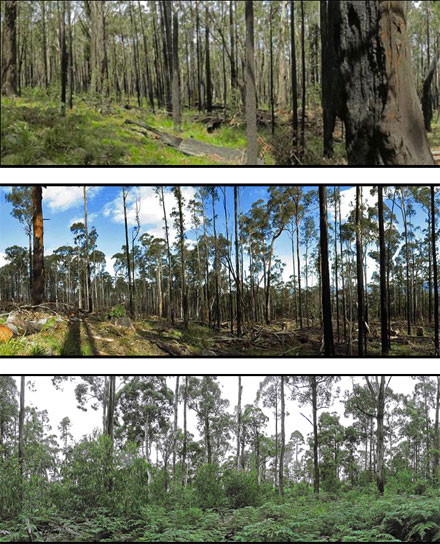
Single tree selection is a low intensity method of harvesting where individual or small groups of trees are selected and removed within an area planned for timber harvesting. Source: Timberbiz
This method looks for trees within areas of forest that contains a mix of different age classes ranging from young five year old regrowth trees to old growth trees that have already begun forming natural hollows.
The trees are selected on the basis of diameter and condition, with smaller aand younger trees retained to grow on to the next harvest and the old growth trees left for future species habitat.
By selecting from the remaining competing trees, the retained trees have access to enough light, moisture and soil nutrients to respond and grow larger.
To be selected for single tree selection harvesting, trees need to be aged between 60 and 120 years. Both good quality trees will be removed for sawlog and poorer quality mature trees will be removed to allow the younger trees to become the future sawlogs.
Any remaining trees are either left behind as habitat trees or retained to continue to grow. When groups of trees are harvested during this process, the mechanical disturbance allows a seedbed for new seedlings to naturally establish.
Single tree selection is used when the forest contains an uneven age class of trees, ranging from young regrowth trees to old growth habitat trees and everything in between. This method also seeks to retain this uneven age class for future single tree selection.
The main difference between single tree selection and clearfell harvesting is the level of intensity required to complete each operation.
Single tree selection is a much less intensive method of removing trees and is unique in that it leaves behind many trees of different age classes to continue to grow larger and stronger.
Clearfell harvesting is a more effective method of harvesting in taller, even aged wetter forests and is more successful in these cases when it comes to regrowing the forest back to its natural state, however it is a more intensive method of harvesting which involves removing entire areas of trees in the one operation.
Single tree selection is used when the forest contains an uneven age class of trees, ranging from young regrowth trees to older trees and everything in between. This method also seeks to retain this uneven age class for future single tree selection.







